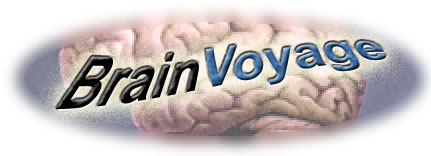


FEATURED BOOKS:
Reality Begins with Consciousness |
Cry the Beloved Mind |
Déjà Vu Trilogy
RBC-Key Features | RBC-Glimpses and Glossary | Collector's Items |
Forensic Expert |
Quakes |
Innovative Psychopharmacotherapy |
Déjà Vu Revisited |
Déjà Vu: Second Look |
Déjà Vu Glossary & Library
For more on the following click here:
Déjà Vu |
Forensics |
Stress |
Seizures & Spells |
Anxiety & Depression |
Dieting and Nutrition
More on Cry the Beloved Mind |
More on Déjà Vu |
More on Attorney Experts
RELATED SITES: www.pni.org | www.vernonneppe.org | www.tddvp.com | www.ecao.us | www.healthyharmony.com
| Table of Contents Déjà Vu Revisited 1. THE CONCEPT OF D�J� VU EXPERIENCE 1 Personal portrayals The term d�j� vu Towards an operational definition of d�j� vu The components of the operational definition The various manifestations of d�j� vu experience Synthesis 2. THE QUALITATIVE ASPECTS OF D�J� VU EXPERIENCE 12 Overview The incidence of d�j� vu experience Phenomenological categorization of the d�j� vu phenomenon Mechanisms hypothesized in d�j� vu experience Classification of d�j� vu D�j� vu and temporal lobe epilepsy Subjective paranormal experience and d�j� vu Schizophrenia and d�j� vu D�j� vu experience in the normal person Age, early experience and the d�j� vu phenomenon Dreams and d�j� vu experience Parameters for consideration in this research Other kinds of d�j� experience viewed in the context of the present research General comments on the scientific literature on d�j� vu Applications to the present research 3. OPERATIONAL CRITERIA AND RESEARCH DESIGN 66 Operational criteria for Schizophrenia Operational criteria for Temporal Lobe Epilepsy Operational criteria for the Other Epilepsy�Temporal Lobe Dysfunction Group The �Normal� Subjects�Subjective Paranormal Non-Experients and Experients Criteria for subjective paranormal experiences associated with d�j� vu Description of the problem Terminology Areas examined in the present research Hypotheses used in the present research Overview of the research design 4. RESULTS OF THE NORMAL GROUPS 86 Introduction General principles pertaining to case discussions The Subjective Paranormal Non-Experients The Subjective Paranormal Experients Differences between the Subjective Paranormal Experients and the Subjective Paranormal Non-Experients Selected Subjective Paranormal Experients The �Intermediate� Group: Illustrative examples Concluding comments 5. RESULTS�NEUROPSYCHIATRIC CATEGORIES: TEMPORAL LOBE EPILEPTICS 103 Introduction The Temporal Lobe Epileptics Patterns common to the statistically viable Group of Temporal Lobe Epileptics 6. D�J� VU IN SCHIZOPHRENIA CASES 117 Illustrative cases Patterns common to the statistically viable Group of Schizophrenics Comparison of the Temporal Lobe Epilepsy Group and the Schizophrenic Group 7. THE D�J� VU EXPERIENCE: TEMPORAL LOBE DYSFUNCTIONS AND NON-TEMPORAL LOBE EPILEPTICS 135 Illustrative cases Comparison of the Temporal Lobe Epilepsy Group with the Temporal Lobe Dysfunction/Other Epilepsy Group 8. FOUR DIFFERENT KINDS OF D�J� VU? QUALITATIVE ASPECTS OF D�J� VU EXPERIENCE 141 Overview Comparisons of tabulated data Dream recall and d�j� vu Age and d�j� vu Jamais vu experience Incidence of d�j� vu in this research Comparisons of other qualitative parameters Synthesis 9. GENERAL DISCUSSION AND CONCLUSIONS 158 Validity of the concept d�j� vu The reliability of this study Representativeness of the populations Justification for the data analysis Hypotheses Major qualitative features Screening Questionnaire Clinical applications of d�j� vu Theoretical implications of this research The synthesis GLOSSARY REFERENCES AND BIBLIOGRAPHY AUTHOR INDEX SUBJECT INDEX APPENDICES Tables Questionnaires Endnotes: Detailed Discussions |
Home | Cry the Beloved Mind | Reality Begins with Consciousness | Déjà Vu | Order Books | PNI.org | Contact BrainVoyage




|




Read our Disclaimer, Contact Information, and Copyright Notice
Contact Webmaster
Contact Webmaster
Copyright ©1992-2021 Brainvoyage.com

